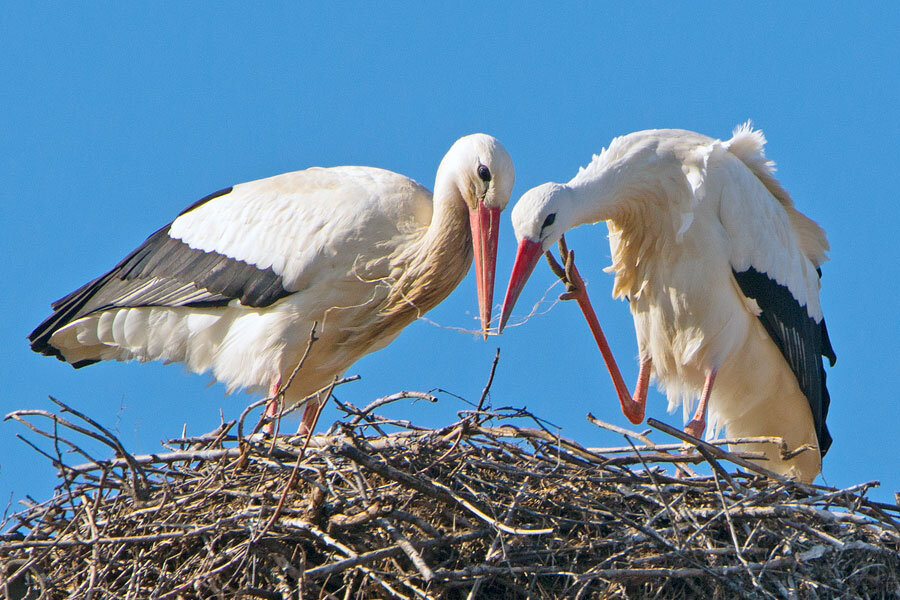European storks skip migration to feast on human 'junk food'
White storks have stopped migrating from Europe to Africa for the winter, say researchers. Instead, they remain in Spain and Portugal year-round, feasting on landfills' 'junk food.'
“Landfill sites provide abundant food resources that are reliable in both space and time, thus likely contributing to enabling individuals to remain in their breeding territory and on their nests year-round,” the team of British and Portuguese researchers explain in their study published Tuesday in the journal Movement Ecology.
Because of the prolific, easily accessible food in landfills, Portugal’s stork population is now 10 times larger than it was 20 years ago. Not only has the overall number grown, but now the population of about 14,000 storks choose to stay year-round.
“We found that the landfill sites enable year-round next use, which is an entirely new behaviour that has developed very recently. This strategy enables the resident birds to select the best nest sites and to start breeding earlier,” lead researcher Aldina Franco, from the University of East Anglia’s School of Environmental Sciences in Norwich, England, said in a press release.
And stay-at-home birds might have a breeding advantage because they are ready to go as soon as mating season begins, suspects Dr. Franco.
“Having a nest close to a guaranteed food supply also means that the storks are less inclined to leave for the winter. They instead spend their non-breeding season defending their highly desirable nest locations.”
But storks aren’t flocking to landfills because they are convenient – they actually seek out the discarded scraps of human food. Just because they are staying in Portugal and Spain for the landfills, doesn’t mean that they are building their nests near the dumps.
Franco and her team of researchers placed GPS tracking devices on 48 birds. And after studying the location of these birds five times a day, Franco and her fellow researchers discovered that storks will travel up to 30 miles to visit a landfill during non-breeding season and up to 17 miles during the breeding season.
“You see some individuals go from the nest to the landfill site and then just go back to the nest,” Franco told National Geographic.
Along with a no-hassle food source, storks are also enjoying milder winters in Spain and Portugal. Thanks to climate change, their winter migration to Africa for temporal reasons is no longer necessary. Warmer European winters have also made the storks’ traditional food source, red swamp crayfish, more accessible.
But storks’ reliance on junk food can’t last: under the new European Union Landfill Directives, all landfill sites with open-air trash piles will be closed by 2018. Portugal’s renovated will have new under cover locations for food waste, inaccessible to birds.
Iberian white storks addiction to artificial food sources needs to be further analyzed, say researchers, because landfill renovations could lead to subsequent population declines.







